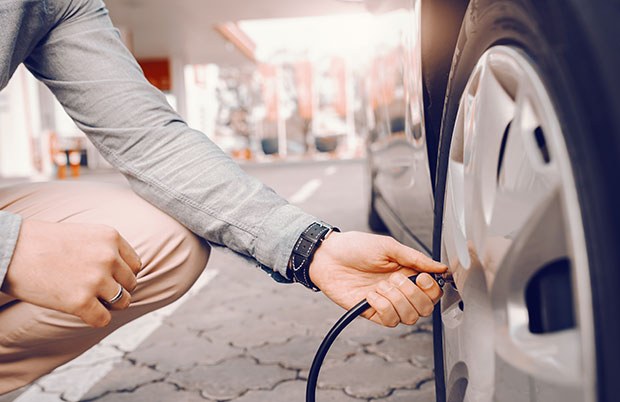
- For most of us, a car is our second biggest expense after the cost of our home. Of course, it comes as no surprise that the bills don’t stop when you pay off your new or used vehicle. According to the Canadian Automobile Association, the price to operate a vehicle in Canada is between $8,600 and $13,000 per year.1 To help combat these expenses, we’ve compiled five simple steps you can take to help keep your car on the road, with your money parked safely in your wallet.
- Slow Down
The faster you go, the more gas you use, decreasing the fuel economy of your car; the most fuel-efficient speed for most vehicles is between 50 and 80 km per hour.2 As we all know, driving over the limit can also result in speeding tickets which remain on your driving abstract/record for two to five years depending on your province and can impact your insurance premium.3
Tip: Plan ahead, lose the lead foot, and relax. Try leaving 10 minutes early so you don’t feel pressured to drive over the speed limit.
- Take great care of your car
Basic car maintenance like regular oil checks and replacing air filters, help your car run more efficiently. Always follow the manufacturer’s recommended service intervals. Some people believe that because a vehicle is leased, they don’t need to take good care of it. However, if you decide to buy out your leased vehicle which often comes with a great rate, you should be extra careful to take good care of your car to keep costs down.
Tip: With young kids, or a hectic schedule, it’s easy for your vehicle to get messy quickly. But you’ll get a better resale price if you maintain it, inside and out.
- Properly inflate your tires
There’s a direct link between fuel efficiency and tire pressure. Keeping your tires filled improves gas mileage and decreases tire wear. For every 3.0 psi (Pounds per Square Inch) below the recommended tire pressure, your fuel efficiency is reduced by 0.6% on average.4 Driving a vehicle with tires that are under-inflated by 8 psi, for example, can increase fuel consumption by 4%. It can also reduce the life of the tires by 10,000 km.
Tip: Temperature also has an impact on tire pressure and cold weather can cause it to fluctuate. Tire pressure should be checked at least once a month.5
- Check with your Insurance Broker
How often do you think about your car insurance? Here’s something to consider: Driving your vehicle for pleasure only, rather than commuting to work, could save you money. So, if your work situation changes, remember to get in touch with your broker.
Tip: Before buying a new car, do your research to see which vehicles have lower-cost insurance ratings. If you’re not already a Servus Insurance Services – Home and Auto customer, get a quote today and see how much you could save.
- Think about driving electric
While electric vehicles (EVs) cost more to buy, in the long run, they could be a more affordable choice. Electricity costs less than gas. EV’s don’t have lots of moving parts like a gas engine. This means no oil changes, mufflers or exhaust systems to maintain, potentially saving you hundreds of dollars a year. EV’s are, for the most part, compact and not nearly as powerful as gas cars or even hybrids. This tends to make them safer to drive, which could also result in a lower insurance rate. The benefits of driving an EV could add up to offset the higher purchase price.6
Visit our website for more information on auto insurance.
References
1 https://globalnews.ca/news/3832649/car-ownership-costs-public-transit-ca...
2 https://www.nrcan.gc.ca/energy/efficiency/transportation/21038
3 https://www.alberta.ca/demerit-points-overview.aspx
4 http://www.tc.gc.ca/eng/motorvehiclesafety/tp-tp2823-menu-200.htm
5 https://point-s.ca/en/blog-and-advices/a-good-air-pressure-of-your-tires...
https://www.cars.com/articles/2013/06/how-to-check-and-fill-tires/
http://www.discounttire.com/dtcs/infoAirPressure.do
6 http://www.theglobeandmail.com/globe-drive/culture/commuting/how-much-do...
https://www.plugndrive.ca/electric-vehicle-benefits/
http://www.greencarreports.com/news/1080925_electric-car-maintenance-a-t...
https://longtailpipe.com/ebooks/green-transportation-guide-buying-owning...
This article is courtesy of Servus Insurance Services | Home and Auto and is provided for your general information only.
Nothing on this site alters the terms or conditions of any insurance policy. Read your policy for a complete description of coverage and contact your insurance provider for coverage and policy details. Policy wording prevails.

